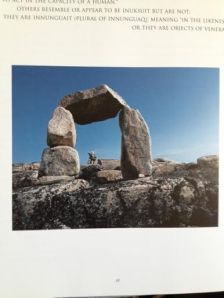Here are some books I’ve read that have helped me on my creative journey. Some have taught me tricks that have saved me years of struggle. Some have made me see the world in new ways. If your local library does not have them, ask for them to get them for you from Inter-library Loan (ILL). Remember, the more money you save from not buying books means more money for art supplies.
Bantock, Nick The Trickster’s Hat – a mischievous apprenticeship in creativity.
Bantock, Nick Urgent Second Class: Creating Curious Collage, Dubious Documents, and Other Art from Ephemera
Beam, Mary Todd The Creative Edge: Exercises to Celebrate Your Creative Self
Berry, Jill K. Map Art Lab: 52 Exciting Art Explorations in Mapmaking, Imagination, and Travel.
Cameron, Julia The Artist’s Way: A Spiritual Path to Higher Creativity.
Cameron, Julia How to avoid making art.
Campanario, Gabriel The art of urban sketching: drawing on location around the world.
Conlin, Kristy Art Journal Kickstarter: Pages and Prompts to Energize Your Art Journals.
Cozen, Chris Acrylic Solutions: Exploring Mixed Media Layer by Layer.
Currie, Jim. The mindful traveler – a guide to journaling and transformative travel.
Diehn, Gwen The Decorated Page – Journals, Scrapbooks and albums made simply beautiful.
Doggett, Sue Bookworks.
Evans-Sills, Faith and Mati Rose McDonough Painting the Sacred Within
Ganz, Nicolas Graffiti World – Street art from five continents
Gregory, Danny Art Before Breakfast: A zillion ways to be more creative no matter how busy you are.
Gregory, Danny Everyday Matters
Gregory, Danny The Creative License: Giving Yourself Permission to Be The Artist You Truly Are.
Harrison, Sabrina Spilling Open – the art of becoming yourself.
Hellmuth, Claudine Collage Discovery Workshop: Make Your Own Collage Creations Using Vintage Photos, Found Objects and Ephemera.
Hennessy, Alena Alter This! Radical ideas for transforming books into art.
Jacobs, Michael and Judy Creative Correspondence.
James, Angela The Handmade Book
Jones, Heather. Water Paper Paint. Exploring creativity with watercolor and mixed media.
Koch, Maryjo Vintage Collage Journals – journaling with antique ephemera.
La Plantz, Sherren Cover to Cover – creative techniques for making beautiful books, journals and albums.
MacLeod, Janice A Paris Year: My day to day adventures in the most romantic city in the world.
Nerjorde, Arne Make your own ideabook with Arne and Carlos
Neubauer, Crystal The Art of Expressive Collage.
Newburger, Emily Journal Sparks. Fire up your creativity with spontaneous art, wild writing, and inventive thinking.
Pickett, Jan Decorated Lettering.
Roberts, Kelly Rae Taking Flight: Inspiration and Techniques to Give Your Creative Spirit Wings.
Scheinberger, Felix Urban watercolor sketching: a guide to drawing, painting, and storytelling in color.
Schilling, Richard Watercolor Journeys: Create Your Own Travel Sketchbook.
Sharpe, Joanne The Art of Whimsical Lettering.
Smith, Keri Wreck this Journal.
Smith, Keri How to be an explorer of the world- portable life museum.
Swift, Vivian Gardens of Awe and Folly.
Swift, Vivian When Wanderers Cease to Roam.
Sonheim, Carla Drawing Lab for Mixed-Media Artists: 52 Creative Exercises to Make Drawing Fun.
Thorspecken, Thomas Urban sketching: the complete guide to techniques.
Tourtillott, Suzanne Making and Keeping Creative Journals.








You must be logged in to post a comment.